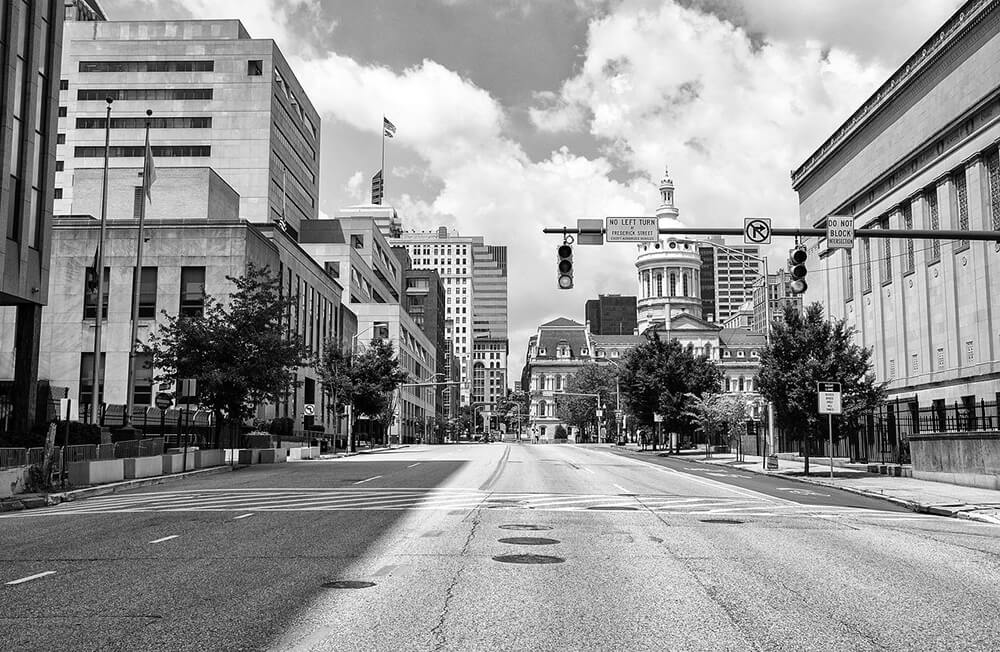How Does Poor Road Design Contribute to Accidents?

Baltimore drivers rely on safe, well-maintained roads to get to work, pick their children up from school, and run errands. The roads you travel every day can be deceiving, though. While they might appear to be safe enough for regular use at first glance, there may be hidden dangers that put you and your loved ones at risk.
Poor road design increases your chances of being involved in a serious car accident. Let’s look more at how poor road design contributes to accidents.
Examples of Poor Road Design
No two roads are exactly alike, and the problems you may encounter with road design on the interstate will likely be much different than those you deal with when traveling through an urban area. Below are some common examples of poor road design you might deal with on a regular basis.
Roads That Are Too Narrow or Too Wide
In America, most motor vehicles have an average width of 70-80 inches. This means that your vehicle could be nearly six feet seven inches wide, although most fall on the lower end of the scale and are closer to five feet eight inches wide.
The typical urban road lane is between 11 and 13 feet wide, with 12 feet generally being considered the safest choice. Historically, officials assumed that roads less than 12 feet wide would decrease vehicle capacity and slow down the flow of traffic.
New research from the National Association of City Transportation Officials (NACTO) refutes this long-held belief. Instead, researchers claim that their data demonstrates how lanes that are 12 feet wide actually pose a greater threat to motorist safety. NACTO asserts that:
- Lane widths of ten feet are safest.
- Lane widths of 11 feet are acceptable for designated bus and truck lanes.
- Parking lanes should only be between seven and nine feet wide.
Speed is one of the biggest risks associated with wider lanes. Motorists tend to drive much faster when traveling in a 12-foot-wide lane compared with one that is only ten feet wide. In urban areas, roads with smaller lanes tend to accumulate less stormwater and also have shorter crossing distances for pedestrians.
Lanes can be too narrow, though. Older sections of urban areas and underfunded rural roads all run the risk of being too narrow for modern vehicles. Any roads that are less than nine feet in width can be difficult to navigate and may increase the risk of head-on collisions, sideswipes, and other crashes.
Inadequate Pedestrian Crossings
It is not easy being a pedestrian in a city primarily designed for motor vehicles. Crosswalks are sometimes spaced too far apart or at inconvenient locations, requiring pedestrians to go far out of their way just to safely cross the street. Currently, the average pedestrian is only willing to walk three minutes out of the way to use a crosswalk rather than just crossing wherever they are.
The Federal Highway Administration states that safe pedestrian crossings should exist at most direct crossing locations, even if there is not a traffic light. Crosswalks should also be placed near transit areas, like bus stops and subway stations. Pedestrians who are running late for public transit may be tempted to cross a nearby road even if there is no crosswalk.
This lack of planning and consideration for pedestrians puts both pedestrians and drivers at risk for accidents and injury.
Confusing and Outdated Designs
Navigating older parts of any city, such as downtown areas, can be confusing for even the most experienced driver. Even as downtown areas thrive economically with new stores, restaurants, and living spaces, the roads rarely get the upgrade they need.
The average downtown area might be little more than a maze of one-way streets with confusing signs and exceptionally narrow lanes. This creates an opportunity for head-on collisions, especially on weekend nights when residents might be out enjoying everything their downtown area has to offer.
City officials can help limit confusion in downtown and other older areas by erecting clear signage that gives drivers plenty of time to change lanes or slow down as needed.
No Shoulder Space
The shoulder (also known as the breakdown lane) is an important feature on any highway or interstate and is located on the outside part of the far-right lane. It is much safer to pull over and deal with an emergency in the shoulder than it is to remain on the interstate.
Although the average driver is not allowed to use the shoulder for regular travel, first responders like firefighters and paramedics can use it to bypass any traffic when responding to an emergency.
Shoulders are also a smart safety feature on curved roadways, as they increase the distance between the roadway and gutters. When it rains or storms, water will naturally drain farther away toward the gutter, reducing the risk of drivers hydroplaning.
When highways, interstates, and even some urban roads do not have shoulders, drivers may face a higher crash risk. For example, a disabled vehicle can be moved into the shoulder of the road to allow traffic to safely pass by. When no shoulder exists, there is nowhere else to move a car that’s broken down, and traffic might not be able to slow down enough in time to avoid a collision.
Inadequate Drains
Built-up water on the road is a crash risk for everyone. Whether from a storm, a leaking fire hydrant, or someone washing their vehicle in their driveway, a water-slick road poses a hydroplaning risk.
Hydroplaning happens when you’ve lost all traction between your vehicle’s tires and the road. You may even feel like you’re sliding on ice. If you start hydroplaning, you should:
- Slow down by easing your foot off the accelerator.
- Try to realign your tires with the direction you are traveling by gently steering in the same direction that your vehicle is hydroplaning.
- Avoid slamming on the brakes.
Gutters and drains play a crucial role in limiting the risk of hydroplaning and related accidents. On roads without sufficient drainage, water can build up even if it only drizzles lightly.
Who Is Responsible for Your Injuries?
Drivers are responsible for driving as safely as the situation demands. This means that how a driver behaves in ideal driving conditions is not the same as how they should act on a wet road with narrow lanes. If you know that poor road design contributes to accident, you should adjust your driving behavior accordingly when traveling on roads that are not wide enough or that do not feature shoulders.
If you were injured in a car accident because another driver was acting negligently or recklessly for the given driving conditions, you could be owed compensation.
The car accident lawyers at Belsky & Horowitz, LLC can help you determine whether you have a case and, if so, what the value of your claim is. Keep in mind you’ll need compensation for things like medical bills, lost wages, pain and suffering, and more. When you contact us for a free consultation, we’ll talk you through your options for compensation, including filing a personal injury claim.





